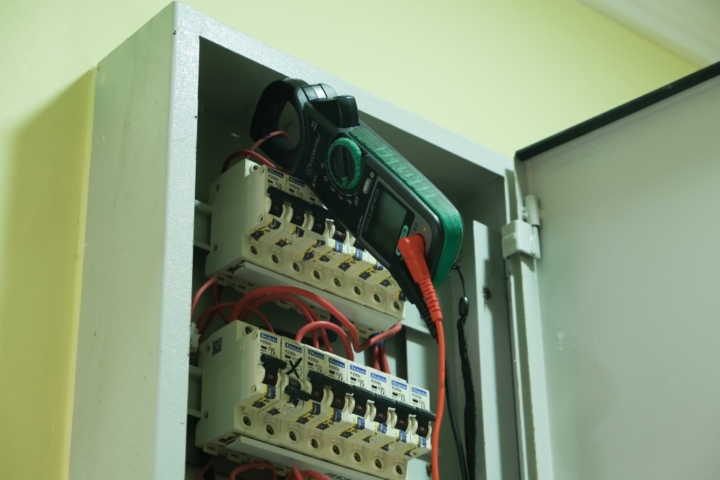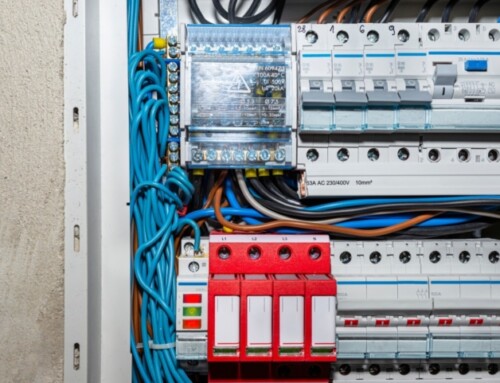Table of Contents
How important is the tool circuit breaker finder in your arsenal?
It depends upon whether you are an electrical professional or a DIY enthusiast. Professionals primarily use a breaker finder to find a particular circuit breaker.
For the uninitiated, a circuit breaker is a safety device that protects your home and electronic equipment from electrical hazards such as overload, short circuits, etc. They are installed in a circuit breaker panel, also known as a circuit breaker box.
Read on to know how to use a circuit breaker finder and how to get the best one from the market.
What is a Circuit Breaker Finder?
A circuit Breaker Finder is a device used for locating the circuit breaker controlling a specific set of outlets. The circuit breaker locator and circuit breaker tracer are its other names. It comes in handy when you need to work on a particular breaker and your circuit breaker panel is not mapped correctly.
How Does a Circuit Breaker Locator Works Through its Different Parts?
There are 2 parts to a circuit breaker finder:-
- Transmitter: It gets plugged into the outlet with the help of an adaptor. From there, the transmitter sends an electronic signal through circuit wires to find the controlling breaker or fuse of the outlet.
- Receiver: It is used at the circuit breaker panel. It is paired with the transmitter to receive the signal. The receiver beeps and flashes when it passes over the controlling circuit breaker of the outlet.
What are the Types of Circuit Breaker Finders?
Breaker finders work on the basis of receiving the signals. There are 2 types of circuit breaker locaters:-
- Manual Circuit Breakers Finders: Manual circuit breaker finders are suitable for trained electricians. They allow for fine-tuning the sensitivity of the signal from circuit breakers.
- Automatic Circuit Breaker Finders: Automatic circuit breaker tracers automatically set the sensitivity of the signal to the optimum level to prevent false positives from other circuit breakers.
How to Use a Circuit Breaker Finder?
Following are the step-by-step instructions to use the breaker finder:-
- Put the Batteries in the Receiver: Slide back the cover at the bottom of the receiver handle and install a battery (generally 9 volts). Now, set the receiver on maximum sensitivity.
- Test the Device: Check if the receiver is lighting up or beeping when placed near a transmitter plugged into an outlet with power on. It is to make sure that the receiver picks up the right signals.
- Locate the Breaker: Once your transmitter is plugged in, Move the receiver all over the circuit breaker panel at the right angle in front of every breaker. Gradually lower the receiver’s sensitivity. Ultimately you will be left with only one circuit breaker beeping. This is the breaker you were looking for!
- Separate Step for Light Fixtures: To locate a light fixture’s controlling circuit breaker, you need a keyless socket adapter. Remove the light bulb and screw this adaptor in the socket to plug in the transmitter.
When Do You Need a New Circuit Breaker Tracer?
If your breaker finder is not working with a new battery, that’s when you know it’s time to replace it. The repair cost of the circuit breaker tracer is not affordable and practical. So you must get a new one when it stops working.
Should You Buy or Rent a Breaker Finder?
It’s better to buy a circuit breaker finder for your toolkit as it’s not an expensive tool, and you may need it more often. But you may consider renting a circuit breaker locator if you are working on a one-time project.
How to Pick the Best Circuit Breaker Locator?
Some of the crucial factors to ensure that you pick the best circuit breaker finder are as follows:-
- Always choose a breaker finder with a UL certification. These finders are appropriately manufactured. They don’t damage the circuit breakers and don’t cause electric shocks.
- The circuit breaker tracer must come with functions and additional accessories to test the light fixtures and GFCIs.
- You need a high voltage circuit breaker finder for industry use, i.e., of 270 volts or more. For domestic purposes, a breaker finder of 120 volts is enough.
- The receiver’s sensitivity to catch the signals sent by the transmitter should be of optimal level.

D&F Liquidators has been serving the electrical construction materials needs for more than 30 years. It is an international clearinghouse, with 180,000 square facility located in Hayward, California. It keeps an extensive inventory of electrical connectors, conduit fitting, circuit breakers, junction boxes, wire cable, safety switches etc. It procures its electrical materials supplies from top-notch companies across the globe. The Company also keeps an extensive inventory of electrical explosion proof products and modern electrical lighting solutions. As it buys materials in bulk, D&F is in a unique position to offer a competitive pricing structure. Besides, it is able to meet the most discerning demands and ship material on the same day.






